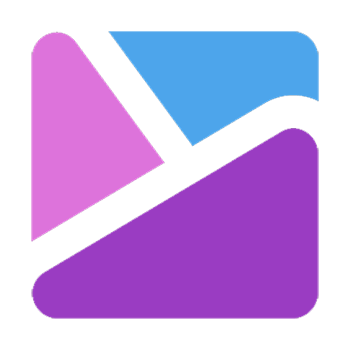
This is Epsy Health
The app that helps patients live better with epilepsy
At Epsy Health, I led mobile app design (iOS and Android) within a cross-functional team, focusing on end-to-end solutions aligned with company vision. This project aimed to redesign the app onboarding flow to improve user experience, boost engagement, and increase retention.
Epsy Health
Client
4 months, London 2020
Timeline
1 Designer
1 PO
2 Developers
Team
Senior Product Designer
My role

The company goal was to disrupt the healthcare industry for people with epilepsy by allowing patients and their doctors to connect and better track and manage seizures, triggers and medication, as well as bring more clarity to the users path towards living better with epilepsy.
My role within the Epsy Health team was to take ownership of the full design cycle from discovery, research and strategy all the way to implementation and launch of new features.

Problem overview:
Research conducted in the six months since launch revealed user struggles with certain onboarding steps. Some users found parts of the flow irrelevant, while others reported not receiving medication notifications and not knowing how to enable them.
Our analytics data also showed the following: 20% of users abandoned the onboarding process, with 13% dropping off specifically at the notification permission request page. Additionally, we found that only 30% of users who completed the onboarding had set up at least one medication and enabled notifications for it.


Our hypothesis was that by addressing the identified issues, we could reverse the declining trend in user retention. We anticipated that prompting users to log seizures and providing timely medication notifications would encourage consistent app engagement.
Competitors analysis:
Our initial step involved researching onboarding best practices, both within the health industry and beyond. A heuristic analysis of twelve different onboarding flows provided valuable insights and uncovered several potential areas for us to explore.

Cross-functional workshop:
To ensure an open and collaborative process, I initiated this project with a workshop involving the entire team (design, development, product, and marketing—18 participants). We shared data insights, research learnings, company objectives, and early discoveries. This shared understanding of the problem enabled a collaborative review of the current onboarding flow, with all team members contributing ideas and assumptions regarding potential changes.

How Might We(s):
The workshop output ensured that we captured all identified opportunities and user pain points. This allowed us to formulate the following "How Might We" questions to guide our next steps:
-
How might we make onboarding more meaningful, engaging, and faster to reduce drop-off?
-
How might we profile users more efficiently, asking only relevant questions to enhance their experience?
-
How might we ensure users see and accept the notification activation request for seizure and medication logging?
-
How might we encourage consistent seizure and medication logging to maximize user benefit?
Prior to ideation, I compiled key UX best practices and cognitive principles to ensure alignment with our onboarding redesign objectives.


I also formulated a set of initial high-level hypotheses to inform our design decision-making process and guide us during the ideation phase.
Ideation stage:
Informed by the discovery phase and our assumptions, I explored several options, mapping initial user flows in Miro and sketching the preferred approach before moving to Figma.
Goal based onboarding and rationale:
We ultimately chose a "Goal-based" onboarding design. While other options presented a uniform experience (either fully upfront or progressively in-app), we hypothesized that a goal-oriented approach would provide users with only the necessary steps, based on their answers during an initial profiling stage. Acknowledging that our users have diverse clinical needs and use cases (including some setting up the app on behalf of others), we determined that tailoring the onboarding steps would make the experience more relevant and allow users to quickly access the features most important to them.



Main challenge:
In addition to creating a more relevant and user-friendly experience, a key challenge was to ensure that users logged at least one medication and enabled notifications during the setup flow. To address this, I first streamlined the medication logging process by introducing a progress bar and reducing the number of steps from five to three. A fallback mechanism was also implemented: if users chose to skip medication logging initially, they were prompted to set a reminder for a later time, which would then trigger the notification permission request.
Final delivery & early results:
After only three months, results were extremely positive. Onboarding drop-off significantly decreased, while medication logging and notification activation skyrocketed.
While still early, six-month retention data shows promising results: We observed an approximate 10% increase in users logging medications and events, and a roughly 7% increase in users consistently logging for at least the first 15 days after downloading the app.
New UI components and illustrations:
Enhancing the visual appeal and user interface of the onboarding flow was a crucial aspect of this redesign. I explored various ways to create more engaging and appealing visuals and UI elements, with the goal of maximizing "aha!" moments and creating a more emotionally resonant experience.
I collaborated closely with developers and product during this stage, designing new illustrations, micro-animations, selectors, and the progress bar. This ensured technical feasibility and stakeholder alignment. These design details were crucial to the overall user experience.

Prototyping and testing:
Following UI refinement, we were ready to prototype and test the experience. We conducted remote, moderated usability testing with five US-based users representing a variety of demographics and clinical needs. User responses were extremely positive and reassuring.

-
All users successfully completed the onboarding flow without issue, finding it clear and straightforward.
-
Four out of five users added medications and enabled notifications.
-
The remaining user skipped medication logging initially but set a reminder and subsequently enabled notifications.
-
Only minor copy adjustments were needed post-testing.

Liked what you've seen?
Let's work together,
say hi! 👋

